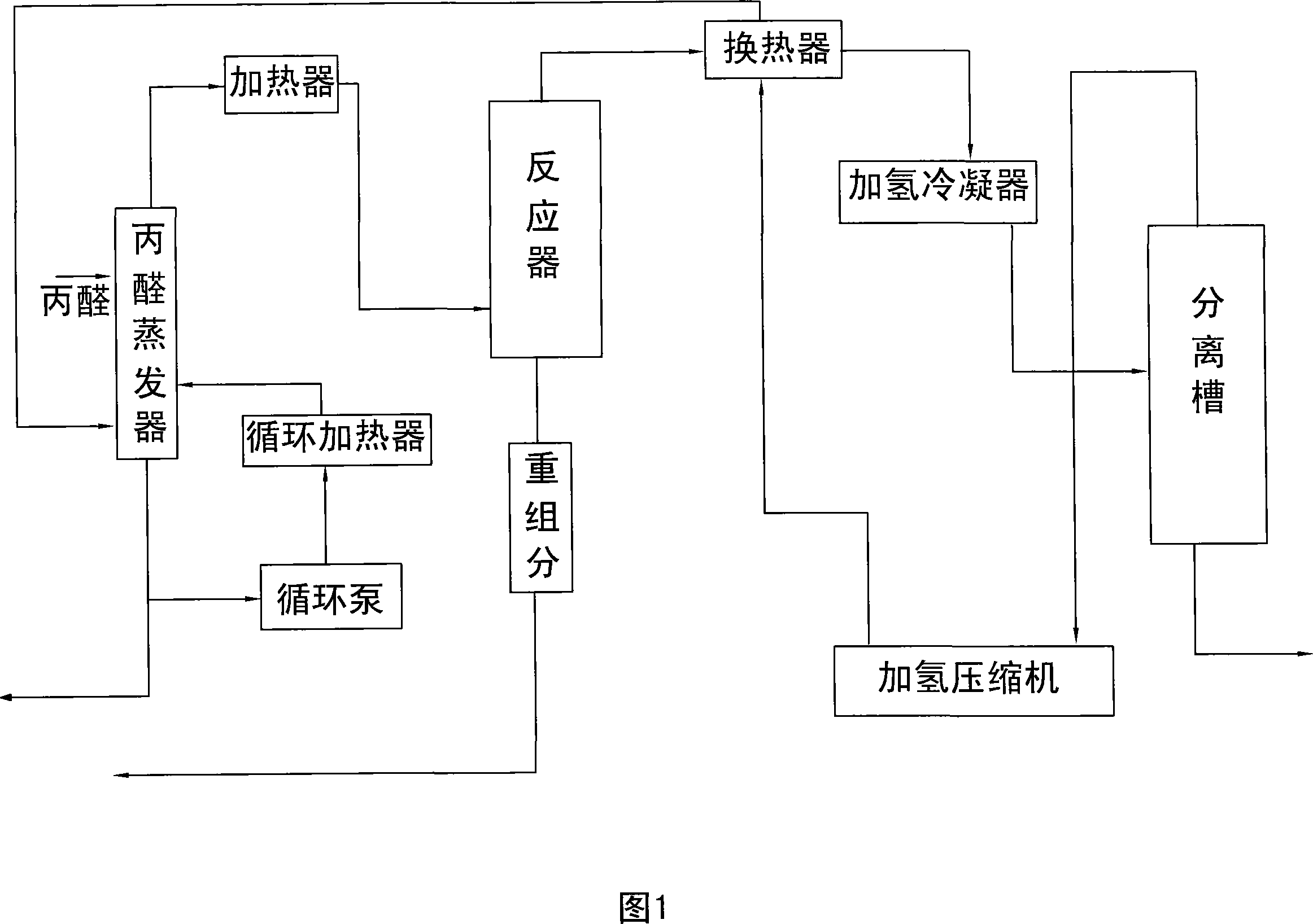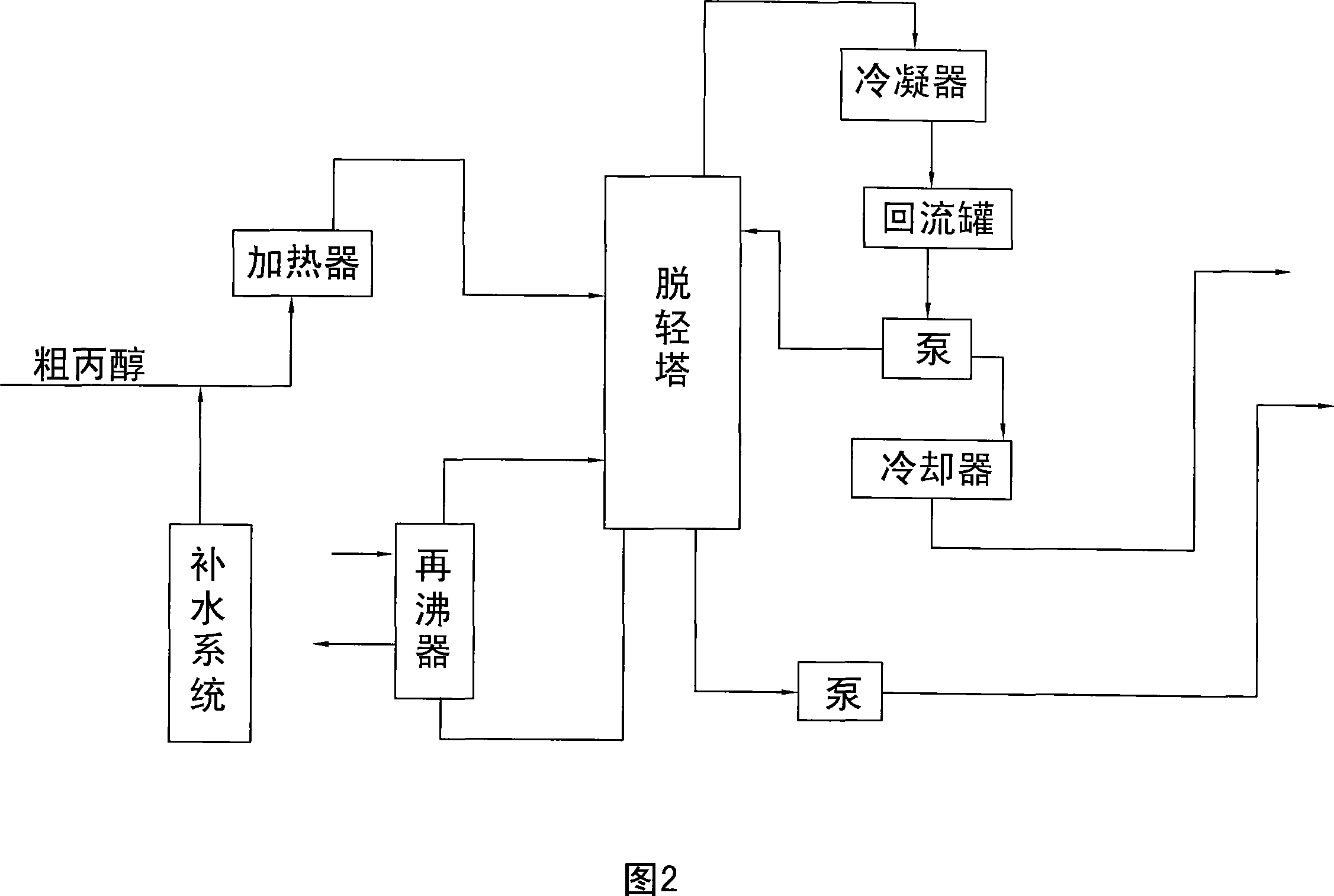Method for removing byproduct propyl propionate during preparation process of n-propanol by hydrogenation of propionaldehyde
A technology of propyl propionate and n-propanol, which is applied in the field of removing by-product propyl propionate in the process of preparing n-propanol by hydrogenation of propionaldehyde, can solve the problems of no large-scale n-propanol production device and the like, and can achieve energy efficiency. Low consumption, simple process, and the effect of improving purity
- Summary
- Abstract
- Description
- Claims
- Application Information
AI Technical Summary
Benefits of technology
Problems solved by technology
Method used
Image
Examples
Embodiment 1
[0021] The content of propyl propionate in the crude propanol is 0.3%, and the amount of supplemented water is such that the water content in the crude propanol is 10%. The temperature at the bottom of the light removal tower is controlled at 90°C, and the temperature at the top of the tower is controlled at 75°C. The content of propyl propionate in the final product n-propanol is 0.07%, and the purity of n-propanol is 99.9%.
Embodiment 2
[0023] The content of propyl propionate in the crude propanol is 1%, and the amount of replenishing water makes the water content in the crude propanol 15%. The temperature at the bottom of the light removal tower is controlled at 94°C, and the temperature at the top of the tower is controlled at 80°C. The content of propyl propionate in the final product n-propanol is 0.1%, and the purity of n-propanol is 99.86%.
Embodiment 3
[0025] The content of propyl propionate in the crude propanol is 1.5%, and the amount of supplemented water is such that the water content in the crude propanol is 20%. The temperature at the bottom of the light removal tower is controlled at 96°C, and the temperature at the top of the tower is controlled at 83°C. The content of propyl propionate in the final product n-propanol is 0.11%, and the purity of n-propanol is 99.83%.
PUM
 Login to View More
Login to View More Abstract
Description
Claims
Application Information
 Login to View More
Login to View More - R&D
- Intellectual Property
- Life Sciences
- Materials
- Tech Scout
- Unparalleled Data Quality
- Higher Quality Content
- 60% Fewer Hallucinations
Browse by: Latest US Patents, China's latest patents, Technical Efficacy Thesaurus, Application Domain, Technology Topic, Popular Technical Reports.
© 2025 PatSnap. All rights reserved.Legal|Privacy policy|Modern Slavery Act Transparency Statement|Sitemap|About US| Contact US: help@patsnap.com


